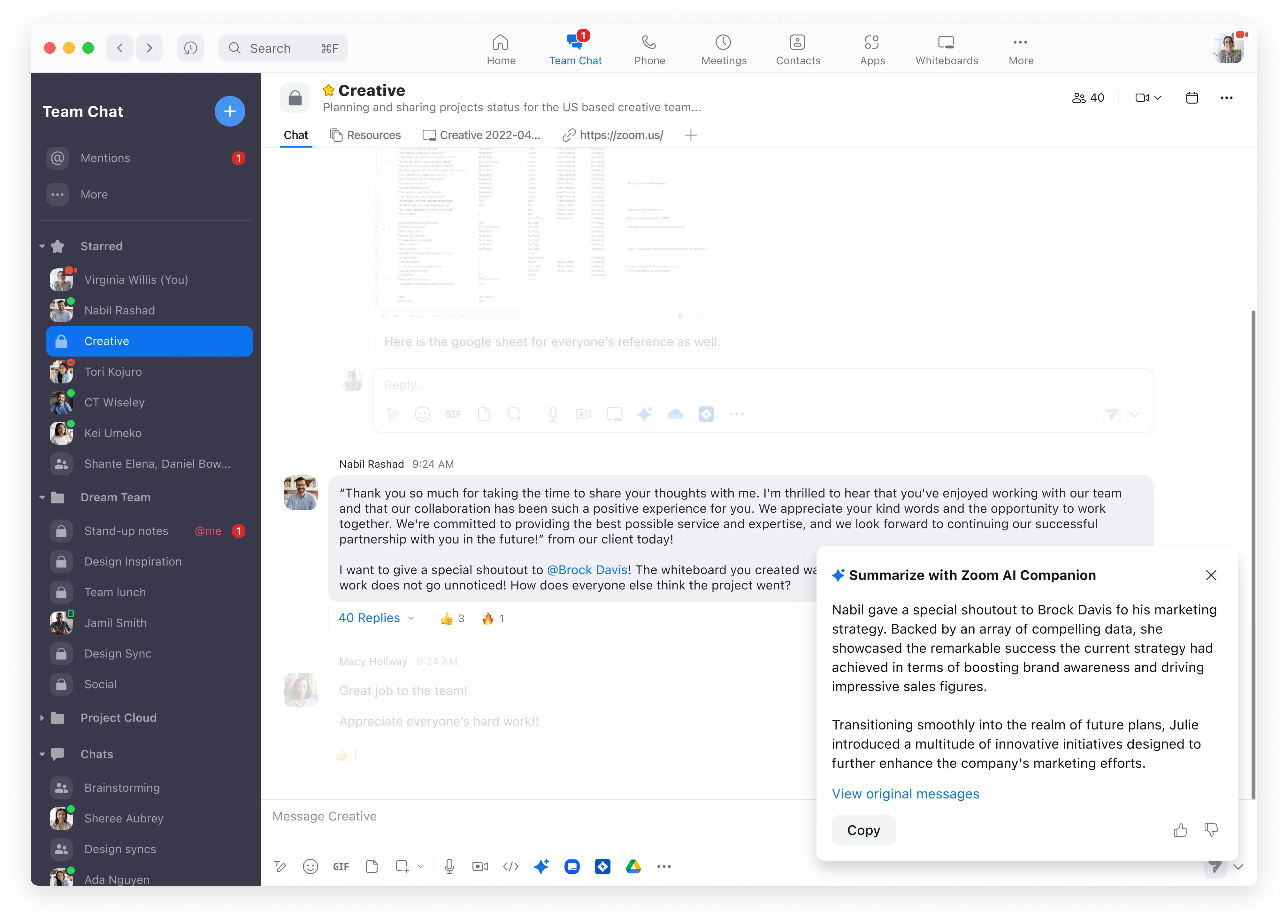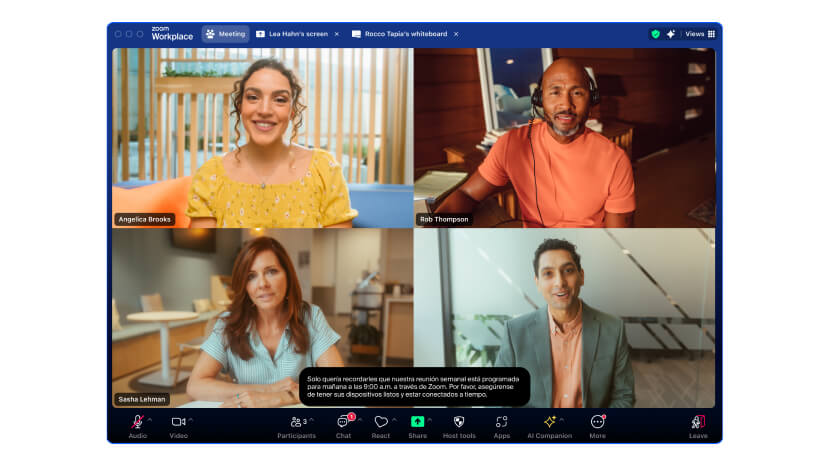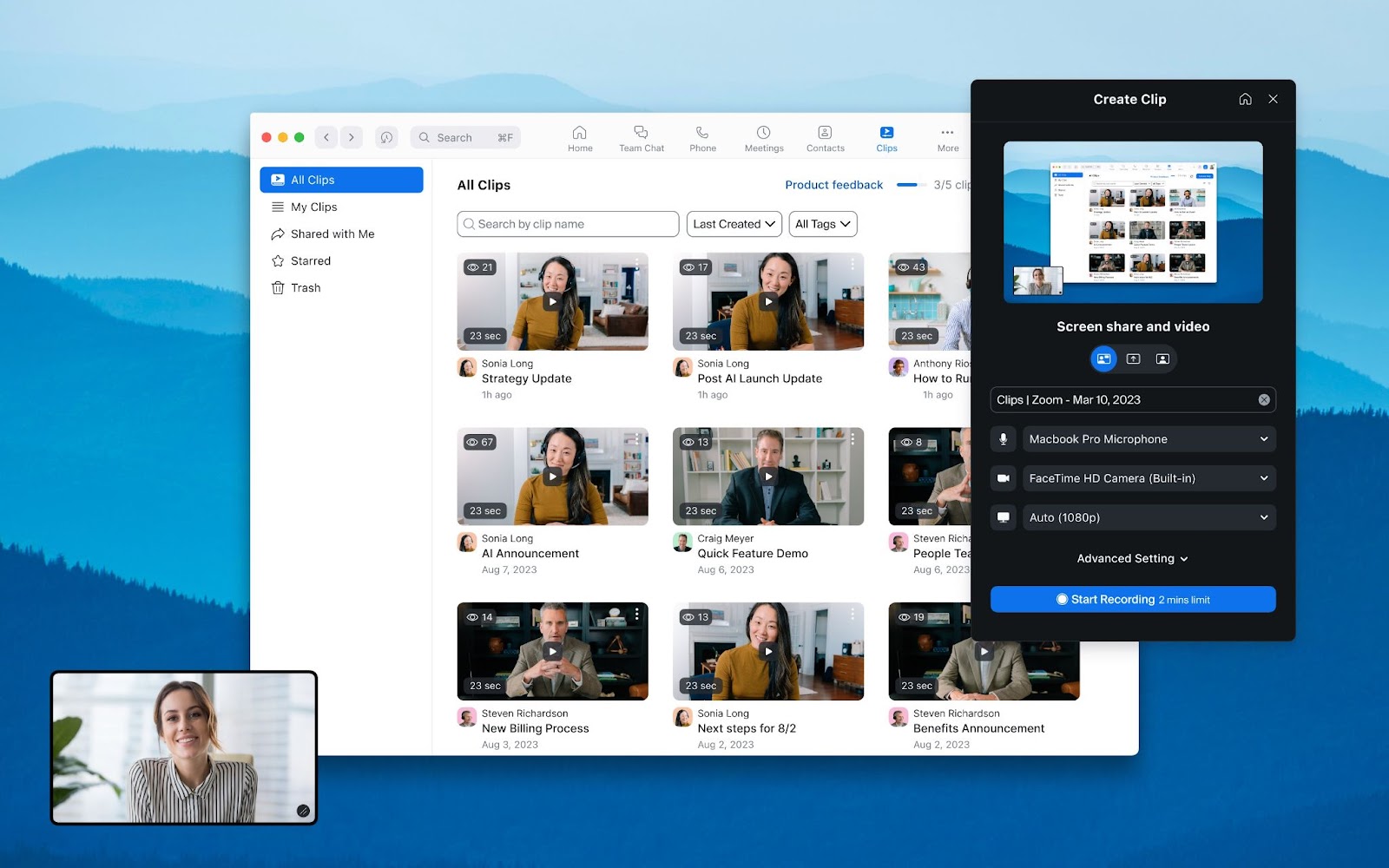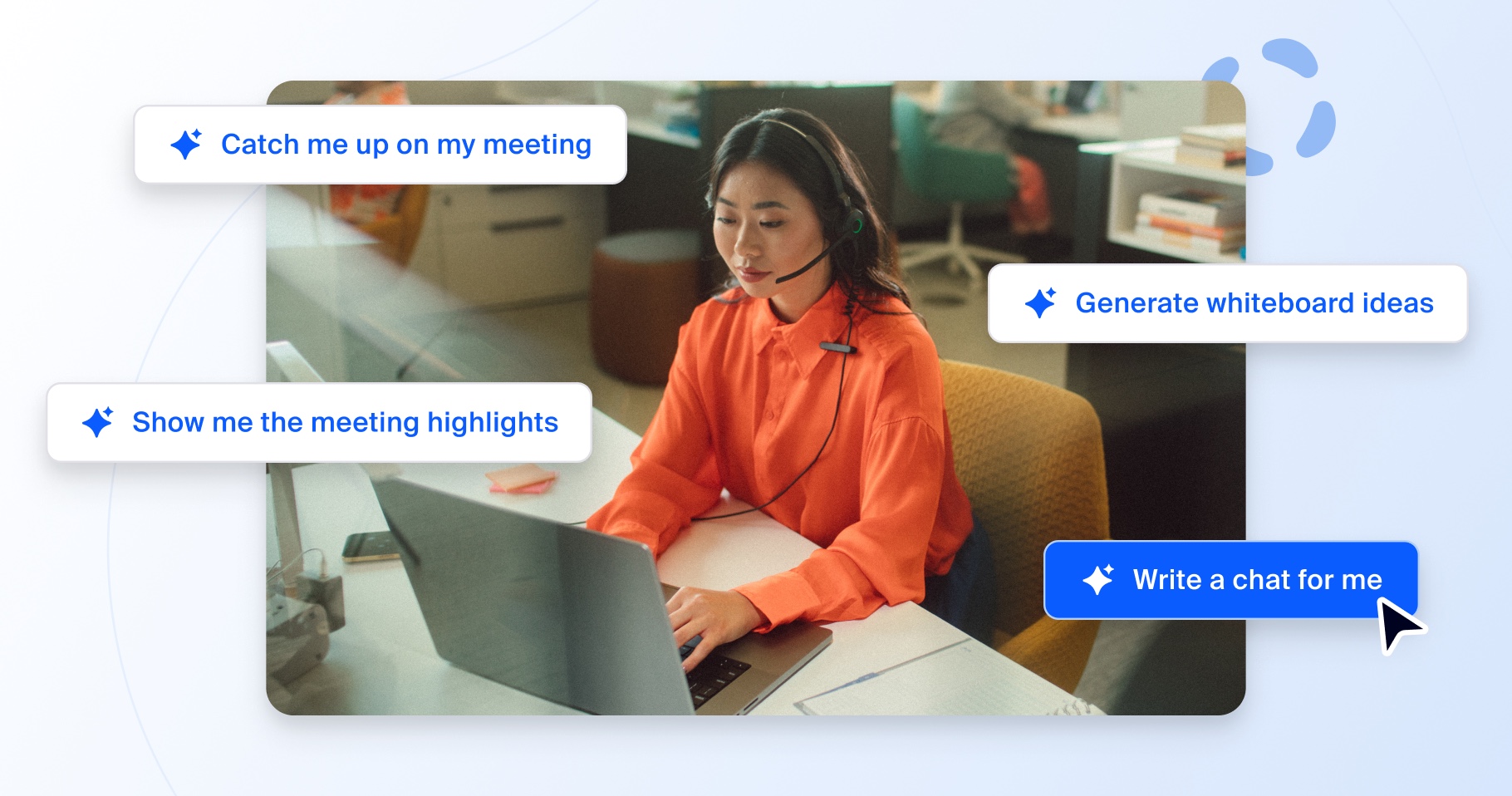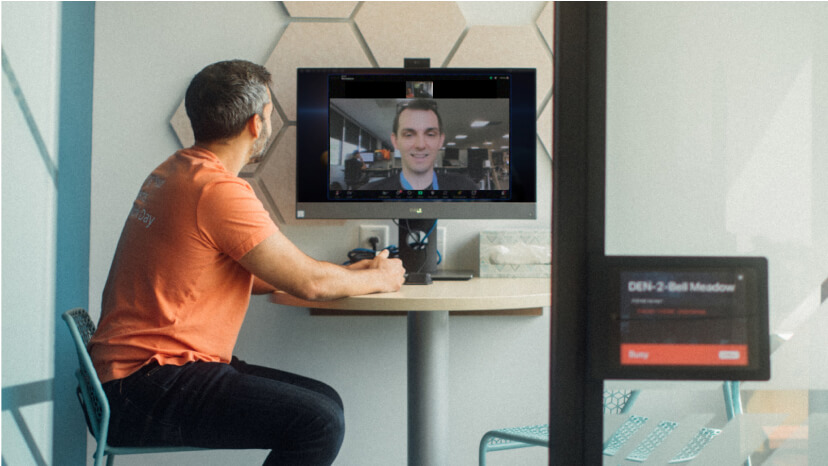Les Zoomies s’appuient sur Zoom Team Chat comme hub de communication, de discussion et de prise de décision. Mais lorsque les membres de l’équipe doivent partager une maquette de produit ou signaler un bug, les mots et les images statiques ne suffisent souvent pas.
« Auparavant, nous prenions des captures d’écran, rédigions des descriptions et les collions dans un chat ou dans un document. Vous pouviez comprendre, mais cela prenait beaucoup plus de temps », précise Darin.
Ce processus a changé avec l’introduction de Zoom Clips, un outil vidéo asynchrone intégré à la plateforme Zoom.
« Avec Zoom Clips, nous pouvons collaborer de manière asynchrone sur la vidéo. C’est le meilleur outil qu’il soit pour les démos », déclare Matthieu, manager produit. Depuis la France, il peut travailler avec des équipes d’ingénieurs du monde entier pour affiner des caractéristiques spécifiques du produit.
« L’équipe d’ingénieurs va par exemple travailler sur une fonctionnalité et enregistrer une courte démo. Lorsque je me connecte, je peux vérifier que cela correspond au cahier des charges et au design attendu », explique Matthieu. « Je peux ajouter des commentaires à un moment précis d’un clip si je vois quelque chose qui ne correspond pas et lancer une discussion. »
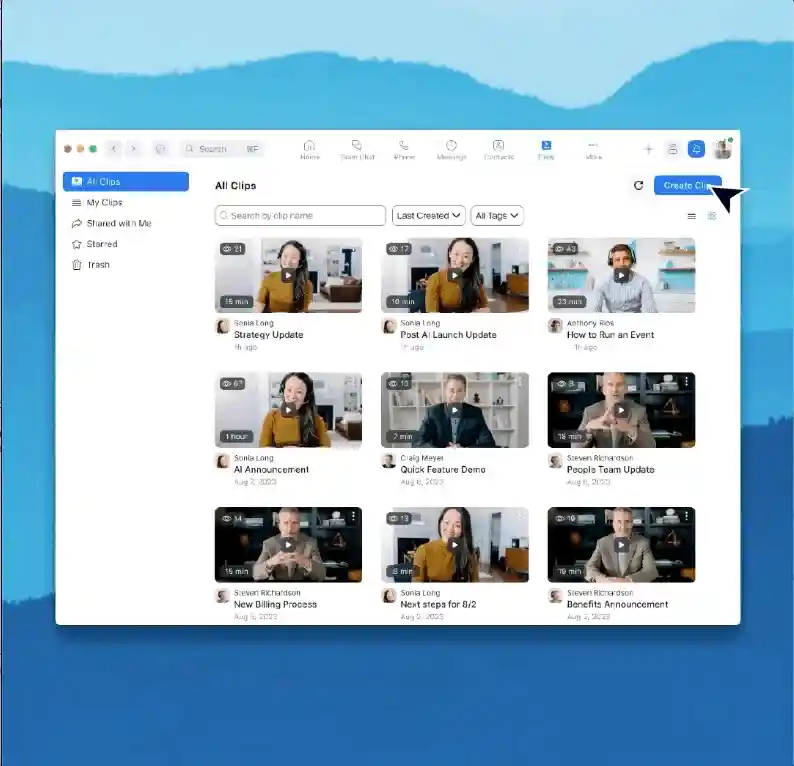
À l’autre bout de la boucle se trouve Kendall, responsable de la conception des produits, et son équipe. « En tant que designer, je reçois parfois une demande dans un lien Clips. Cela me donne du contexte, comme si je venais d’avoir une réunion avec le manager produit », explique Kendall. « Si j’ai une ébauche de design prête dans l’après-midi, je peux prendre quelques minutes pour préparer un clip afin de présenter mes idées, et le lendemain matin, j’aurai des commentaires dans mon clip ou dans Team Chat. Si tout fonctionne bien, mes collègues ajoutent des pouces en l’air au clip.
Les émojis ne sont pas les seules fonctionnalités avancées disponibles dans Zoom Clips. Pour améliorer la qualité vidéo, Kendall et Matthieu peuvent retoucher l’apparence, supprimer le bruit ou même utiliser un avatar. Une fois qu’un clip est partagé, ils peuvent voir combien de personnes l’ont visionné et répondre aux questions et commentaires qui ont été laissés à des moments spécifiques du clip.
Darin considère que cette solution représente un énorme retour sur investissement pour son équipe. « Nous communiquons clairement en très peu de temps », précise-t-il.
Matthieu constate que, même lorsque le décalage horaire n’est pas un problème, il préfère parfois visionner un clip plutôt que d’assister à une réunion. « Les démos organisées en cours de réunion peuvent se révéler moins efficaces : les intervenants doivent se préparer et ils peuvent se sentir obligés de répondre aux questions en direct », commente-t-il. « Avec Zoom Clips, il vous suffit de vous enregistrer. Le temps consacré aux démos diminue considérablement. »
En tant que spectateur, Matthieu préfère avoir le choix et regarder la démo au moment qui lui convient le mieux, plutôt que de se voir imposer une réunion. « Je trouve que je suis plus concentré. Je peux revenir au début ou à un point spécifique si j’en ai besoin.
La communication asynchrone donne à Laura, conceptrice de contenu au Royaume-Uni, le temps de digérer les informations présentées et d’organiser ses idées. « Personnellement, lorsque je reçois un clip, j’aime avoir un peu de temps pour réfléchir à ma réponse », admet-elle. « Les clips facilitent la communication. »



